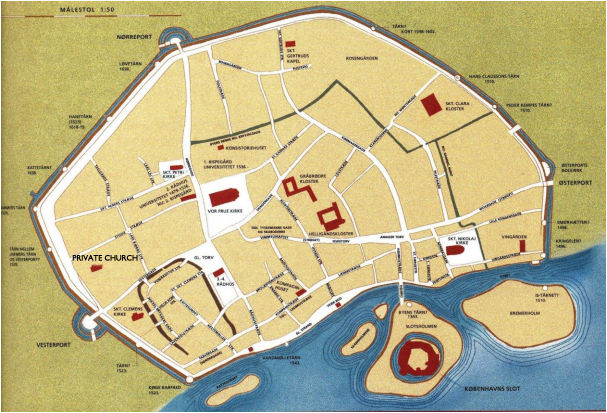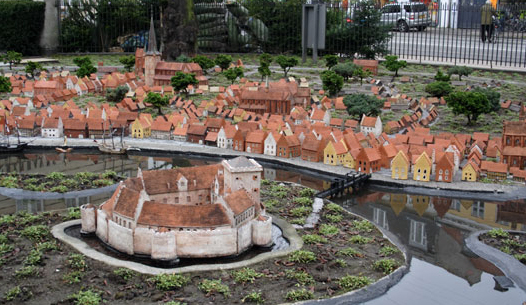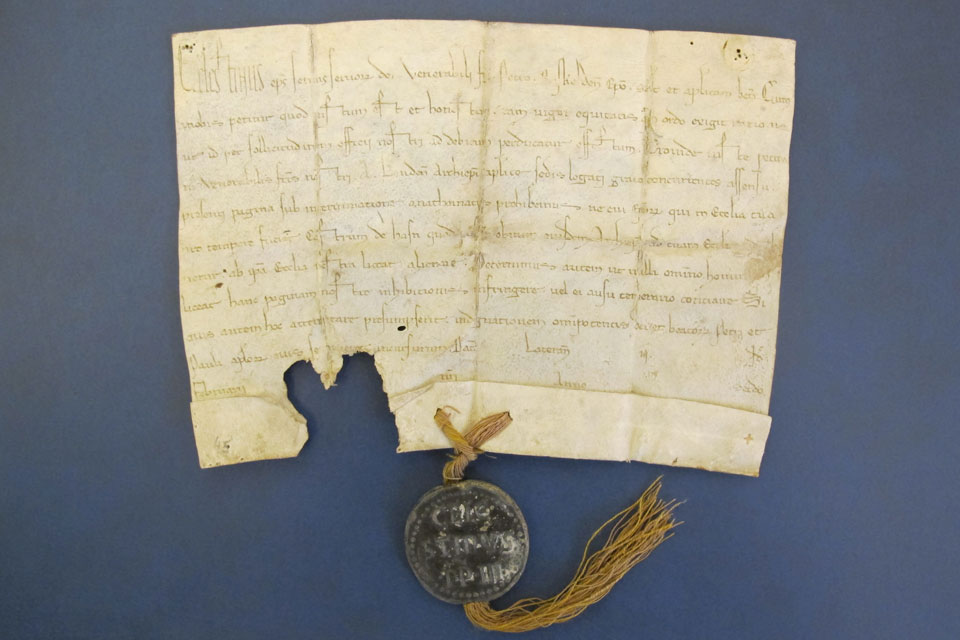Last week, a new attraction opened, The Museum of Copenhagen, covering the history from the ice-age hunters and gatherers and into the near future. Central is the brand new story of the earliest period in the life of the town ca. 1000

Until recently, Danish children were taught that Archbishop Absalon founded the capital of Denmark, Copenhagen, in the second half of the 12th century. Until then, the city was believed to be a small insignificant seasonal marketplace. Between 1167 -71 Absalon, however, had a castle was built on one of the small islands, “Strandholmen”, defending a deep natural harbour against the Baltic and heathen pirates. The ruins of this may be seen below the present-day parliament, Christiansborg. Around this castle, the new town flourished and grew into a significant merchant centre, the traditional story goes.
Already in the late 19th century, however, historians debated another set of theories, formalised in the early 20th century under the name “Clemensstaden” – literally the Town of St. Clemens. Until the 21st century, most of these theories, though, took the form of idle speculations.
From 2008 to 2018, however, archaeological excavations have been carried out in Copenhagen following a huge metro-project. These excavations have led to a series of publications outlining a much more vibrant and earlier history.
All-in-all, the archaeologist in charge, Hanna Dahlström, and her team has located two hitherto unknown cemeteries, what is believed to be two very early stave-churches, and identified three phases in the development of the earliest town.
The first phase takes us back to the early 11th century, at which point two churches appear to have been active. One of them has tentatively been identified as a proprietary church, while the other – St. Clemens – may have represented a royal initiative.
At this time, Copenhagen likely functioned as a year-round marketplace and landing site with jetties down by the harbour. In this early 11th century proto-town, archaeologists found evidence of blacksmithing, comb-making, and perhaps tanning. To the east, evidence of agricultural activities, not least grazing of cattle and perhaps horses has been found. Fishbones witness to significant early fishing activities.
Thus, the cemeteries witness to an early 11th-century “Hafn”, that is a port; or rather “Höfn” as we hear about in the Knýtlingasaga, written down in the 13th century. Coupled with “Køben”, the Viking derivation of the Anglo-Saxon suffix, “Ceaping” it is tempting to consider the very early 11th-century settlement as an early urbanised trading-centre with a port.

We know that this early town from the 11th to 12th century was situated in a landscape dominated by scattered manors, witnessed for instance by such place-names at Amager as Borgby and Tårnby – literally translated to castle-village and tower-village. An intriguing hypothesis has recently been aired that the very early town of Copenhagen not only boasted two churches but also came to hold a ditched and walled enclosure east of the church of St. Clemens, a fortified “royal” manor at the centre of the very early urban settlement. Later, in the 12th century, this fortified enclosure was exchanged with the new castle at Strandholmen, thus representing the third phase.
Perhaps we should see the early foundation of the very first Copenhagen as the result of a determined effort by Sven Forkbeard and Cnut the Great? Such as was the case in Lund, which has recently been dated to the late reign of Harold Bluetooth? This early foundation involved a permanent settlement to the west encapsulating two early stave-churches and perhaps a manor to the east, outside the proto-town. Somewhat later a royal or administrative manor was constructed inside the town.
Surrounding the earliest St. Clemens more than a 1000 graves have been found. Not so many were discovered to the north in the most recent excavations, dated to AD 1026 -1155. However, this latter group of graves belonged to the southern corner of a much larger graveyard. Up until now, as many as fifty graves have been located. Perhaps, the proprietary church was dedicated to St. Olaf as indicated by later medieval sources; and settled by Norse migrants arriving in period between 1042-47 during the reign of the Norwegian-Danish king Magnus the Good ?
Whatever the details behind the development of the very early town, history shows, that it rapidly acquired a strategic role in controlling the growing trade based on the early herring-fishing in the narrow strait of Øresund. The city-laws of 1254 thus claimed taxes from seasonal fishermen catching heering, cod, and eel. At the same time, the town was fortified with a wall, a moat and a gradually stronger castle.
New Museum and New Exhibition
Recently a new museum opened presenting this new and very early story of Copenhagen. Here it is possible to see the results of the archaeological excavations and experience the very early period of the history of the Danish metropol. Unfortunately, the museum has not found room for the exhibition of the old and very charming model of the medieval city of Copenhagen in the new surroundings. Instead the museum has created a modern model of the modern town.

SOURCES:
The Chronology of Medieval Copenhagen
By Jesper Olsen, Hanna Dahlström, and Bjørn Poulsen
In: Radiocarbon Vol 61, No 6 (2019) pp 1675-1683
From a port for traders to a town of merchants: exploring the topography, activities and dynamics of early medieval Copenhagen
By Hanna Dahlström, and Bjørn Poulsen and Jesper Olsen,
Danish Journal of Archaeology, Volume 7, 2018 – Issue 1: Early Towns and Urbanisation
https://www.tandfonline.com/doi/full/10.1080/21662282.2018.1464619
